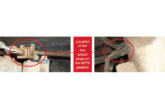Fuel Stock Reconciliation is one of the most useful tools available to fuel operators to ensure that fuel stocks are safe from leaks and theft, as Barry Jenner, Managing Director at Cameron Forecourt, explains.
 It is inconceivable to many accountants and store managers that modern stores would not accurately account for stock. Stock control is of such importance that businesses even keep strict control over stationary inventory, so why do some businesses have such lax control over fuel wet stock?
It is inconceivable to many accountants and store managers that modern stores would not accurately account for stock. Stock control is of such importance that businesses even keep strict control over stationary inventory, so why do some businesses have such lax control over fuel wet stock?
One of the issues with wet stock stored in bulk is that it is difficult to accurately measure and tends to evaporate, as well as grow and shrink in volume due to changes in temperature. This problem makes wet stock control more challenging, but it should not deter businesses from tracking fuel stock. The key is comparing the actual quantity of product with the calculated level, demonstrating that fuel can be managed, providing that the right equipment is available.
A measured solution
A reconciliation system needs nothing more than a means of measuring the volume of fuel in storage, the volume of fuel being dispensed and a pen and paper. Basic stock level management can be achieved using a dip-stick or simple tank gauge, and a fuel dispensing pump equipped with a volumetric meter and a non-resettable register.
Admittedly, stock management with such equipment is unlikely to be particularly accurate, but it would provide the operator with a reconciliation system and consequently some comfort over stock security.
When calculating the stock reconciliation, the operator would establish a starting point stock level and reading from the pump’s non-resettable register.
Using a chart, the operator would then record stock movements daily, including deliveries into the storage tank and fuel dispensed through the pump, providing the ability to track the calculated or book stock value against the tank gauge.
Differences between book stock and actual stock would then be monitored to identify any significant issues.
Modern tank gauging systems provide a more accurate stock level than dip-sticks, but the process is the same. The table below shows a simple example of this calculation. This data is not from a real site, but the example demonstrates the principle.

This table has been prepared to demonstrate the technique, rather than provide an analysis of the data. It is, however, important to note that the data in column ‘I: Difference’, shows that the comparison between tank stock level and book stock fluctuates. This is because of errors in the tank gauge, fuel pump meter and the effect of temperature and other influences.
We can see, however, there is no trend towards fuel loss. If a negative value in column ‘I’ was progressively getting larger then there could be a fuel theft or a leak – though the problem could be as innocent as a poorly calibrated pump or tank gauge.
There are many different approaches to stock reconciliation, from a simple pen and paper solution as described here, through to fully automated systems. The key point to consider is that stock reconciliation is easy to implement and can either reveal a potential problem, or provide an operator with the comfort that the site is not leaking or losing fuel to theft.
Cameron Forecourt takes stock management very seriously and can provide advice on tank stock management, tank level measurement and automated stock reconciliation facilities.








